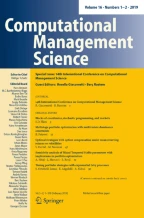
The customer satisfaction, an important concept in the field of general marketing and in the management of firms, is the measure of the degree of customer satisfaction. More precisely, the customer satisfaction provides an assessment of the discrepancy between the perceived performance by the customer (i.e. all the sensations and impressions after use of a product or the fruition of a service) and the expectations (expectations and desires) of the same customer but also represents the company’s ability to anticipate and to manage the expectations of the customer, to satisfy its needs with competence and responsibility. The company resources, in fact, must be organized taking account of the demands of customers who represent a precious commodity for the company, even if their value does not appear in the financial statements, the fulcrum around which revolves the whole system business. To have satisfied customers is, therefore, fundamental for a company and, therefore, the customer satisfaction can be defined as a touchstone for the management of customer relationships, as a key to create the competitive advantage as of a company. In this article, the authors present some of the main processes and detection systems required for a scrupulous and reliable process of measuring of the customer satisfaction or better they present a mathematical framework to determine and to improve the customer satisfaction and to demonstrate how it has a great impact on corporate performance. In particular, the authors propose a model of structural equations with latent variables which is the most rigorous methodology currently available for the evaluations of the customer satisfaction and they hope that the paper, which at first sight has little in common with mathematics, is a very useful for stimulating research at the interface of mathematics and marketing and that it builds a link that can become beneficial for both disciplines involved.
This is a preview of subscription content, log in via an institution to check access.
Price includes VAT (France)
Instant access to the full article PDF.
Rent this article via DeepDyve